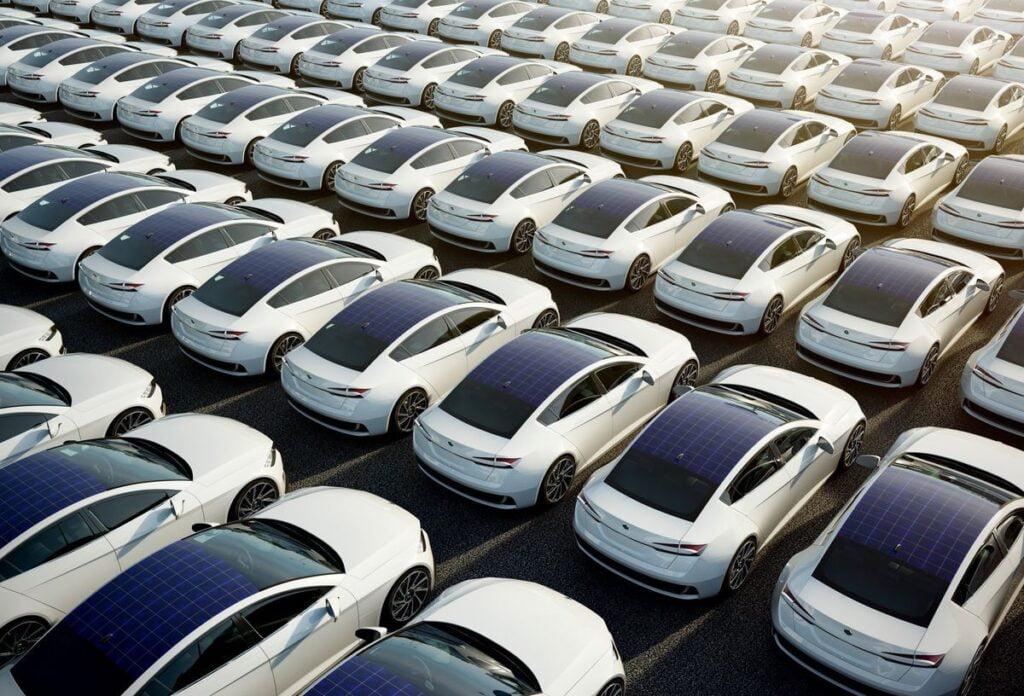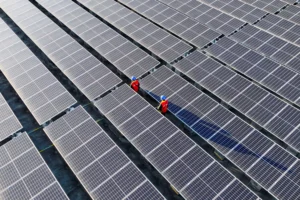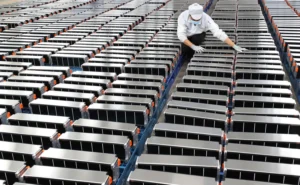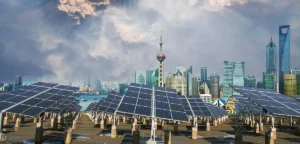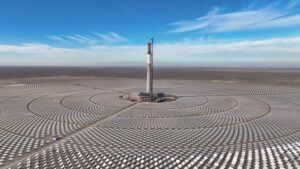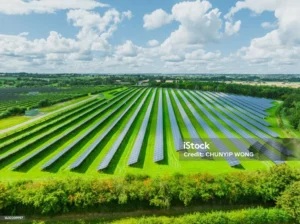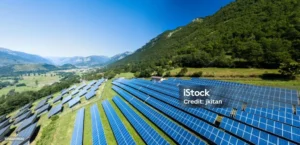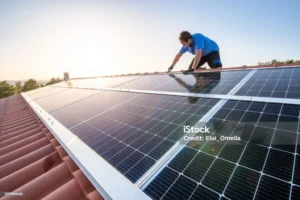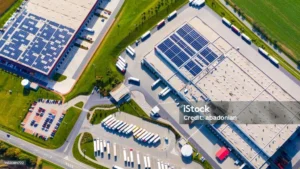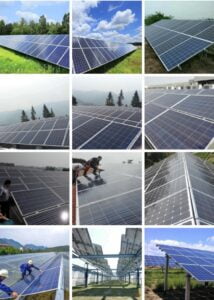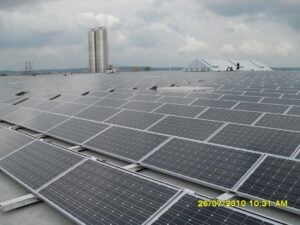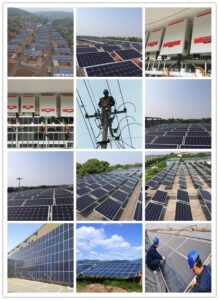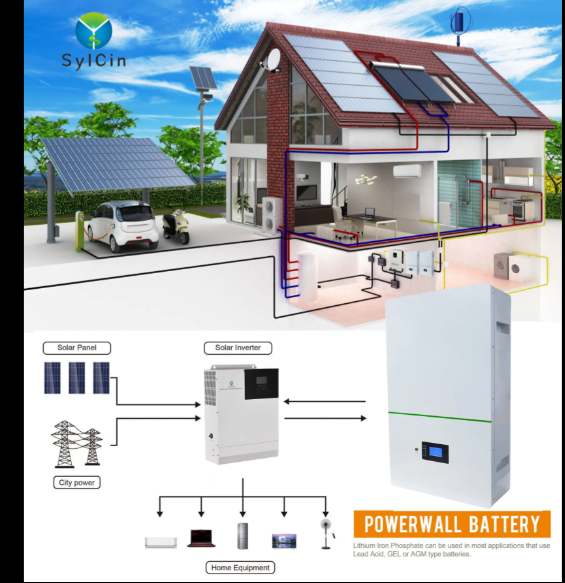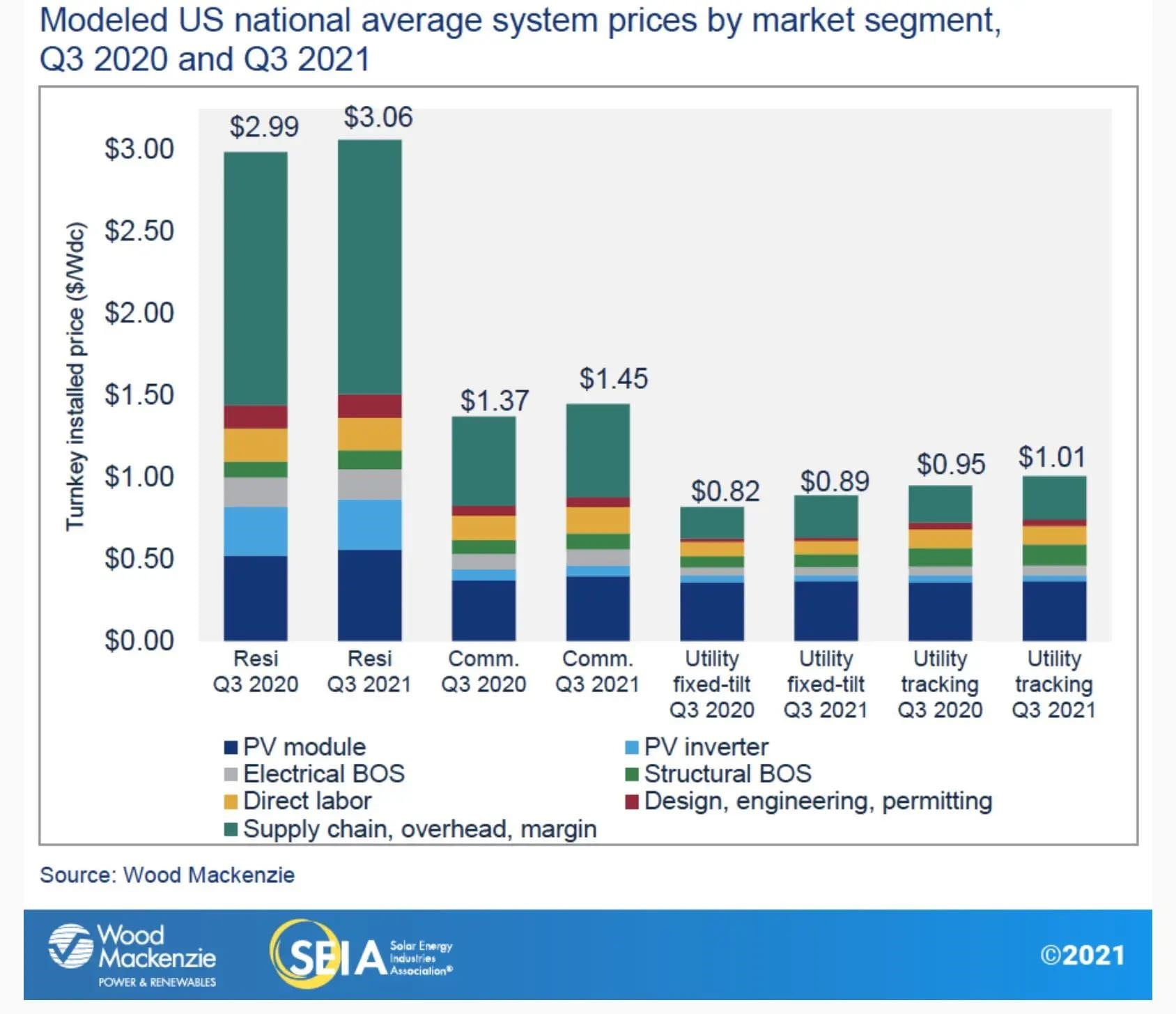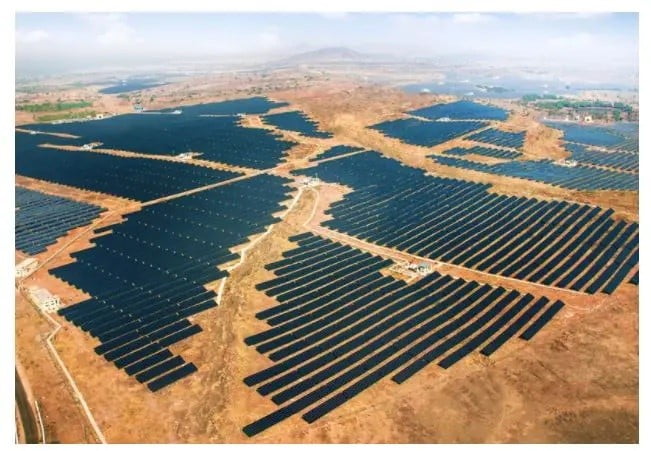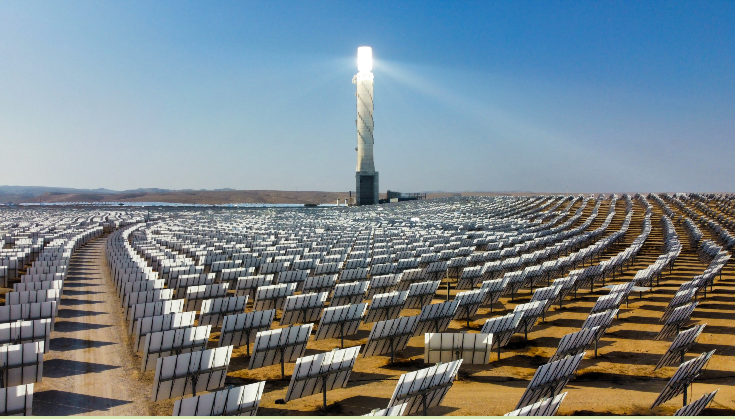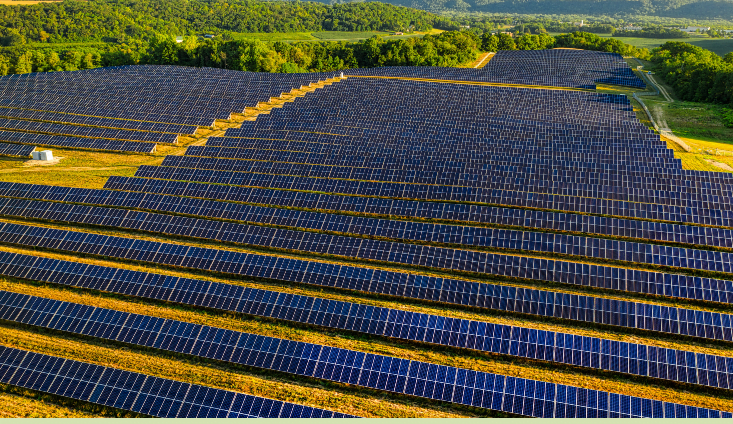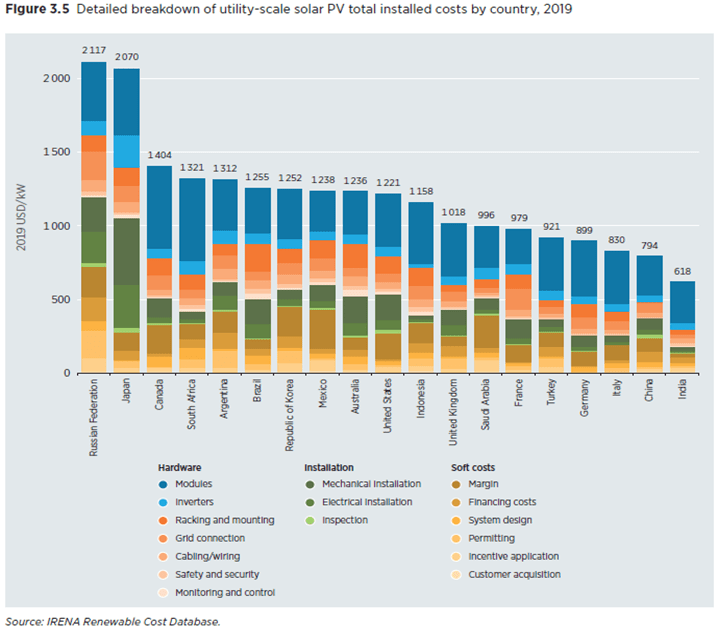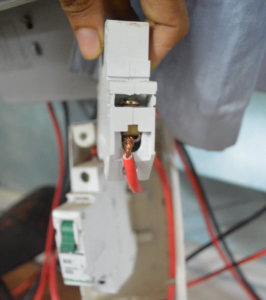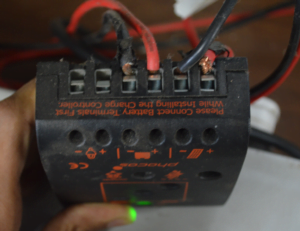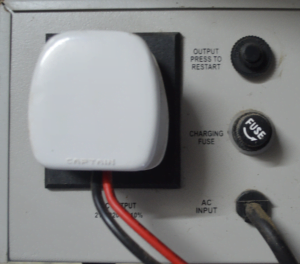We want Solar in
VEHICLES APARTMENTS INDUSTRIES BUILDINGS of Bangladesh
Lorem ipsum dolor sit amet, consectetur adipiscing elit. Ut elit tellus, luctus nec ullamcorper mattis, pulvinar dapibus leo.
Solar in every vehicle
Solar vehicles by ExpoTech
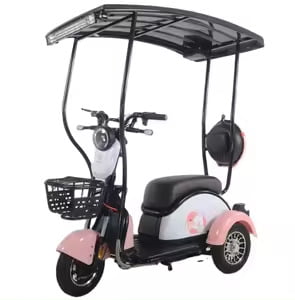
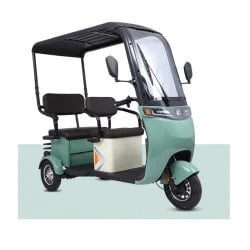
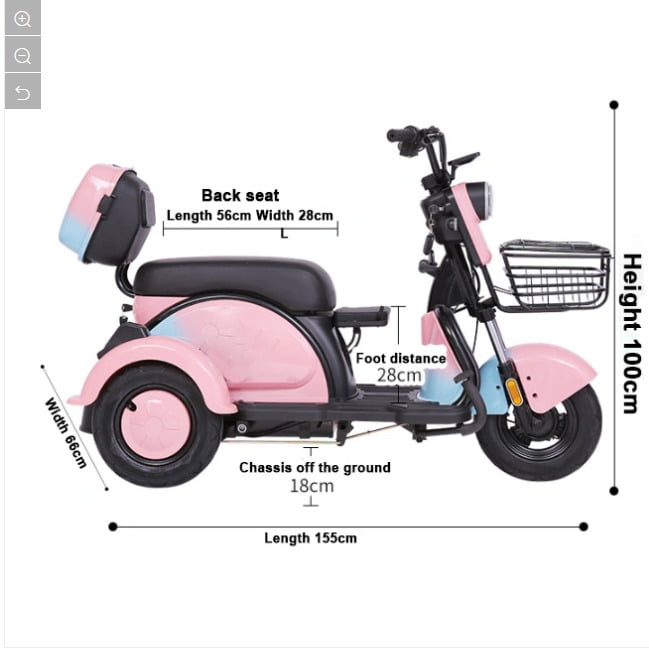



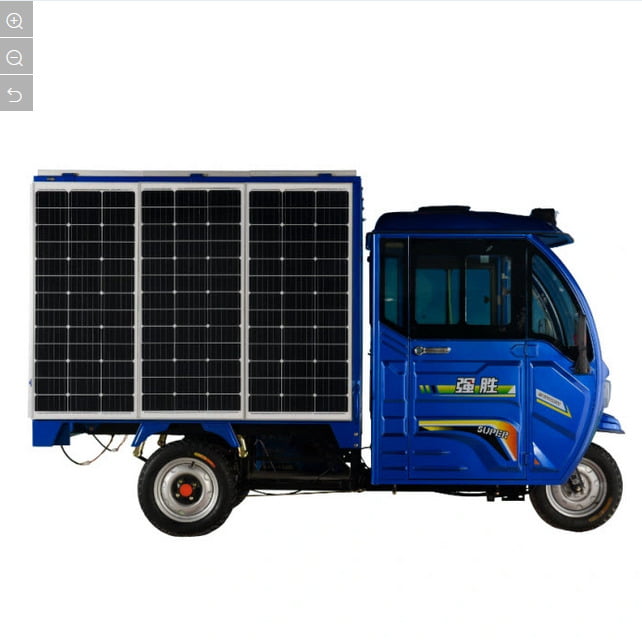
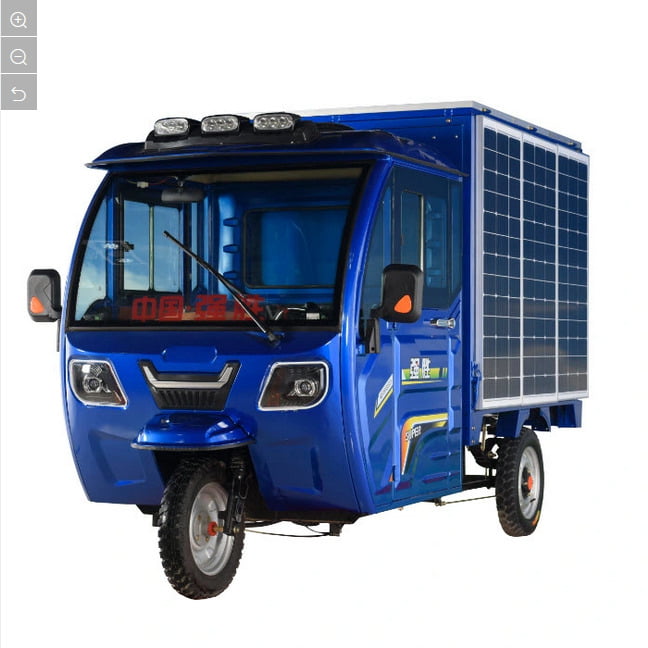
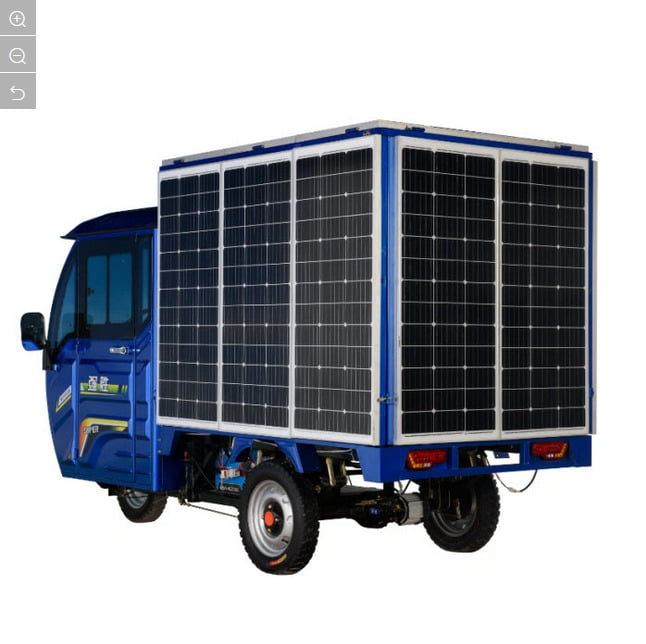
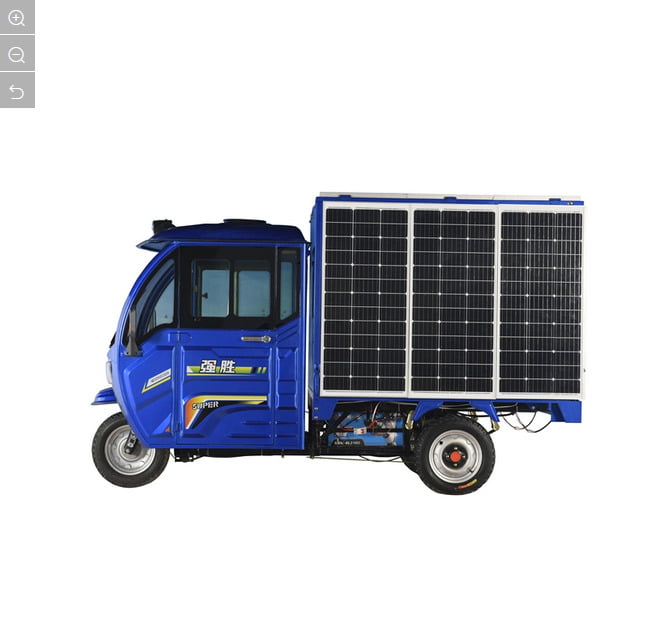
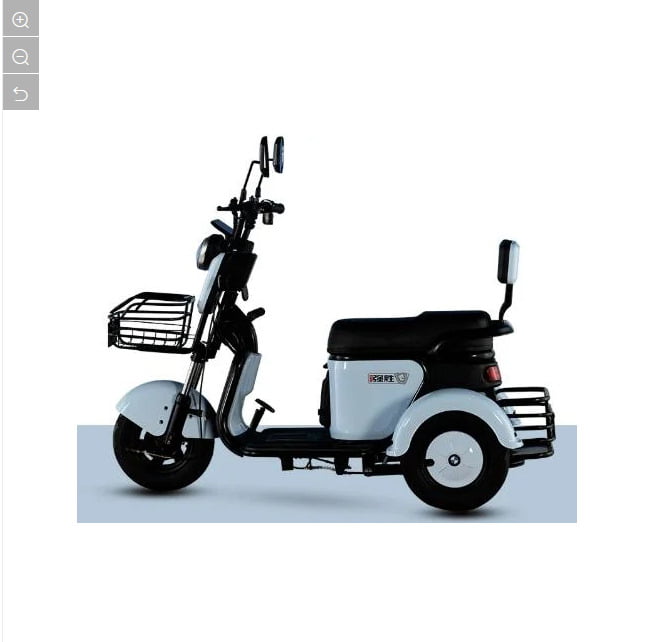

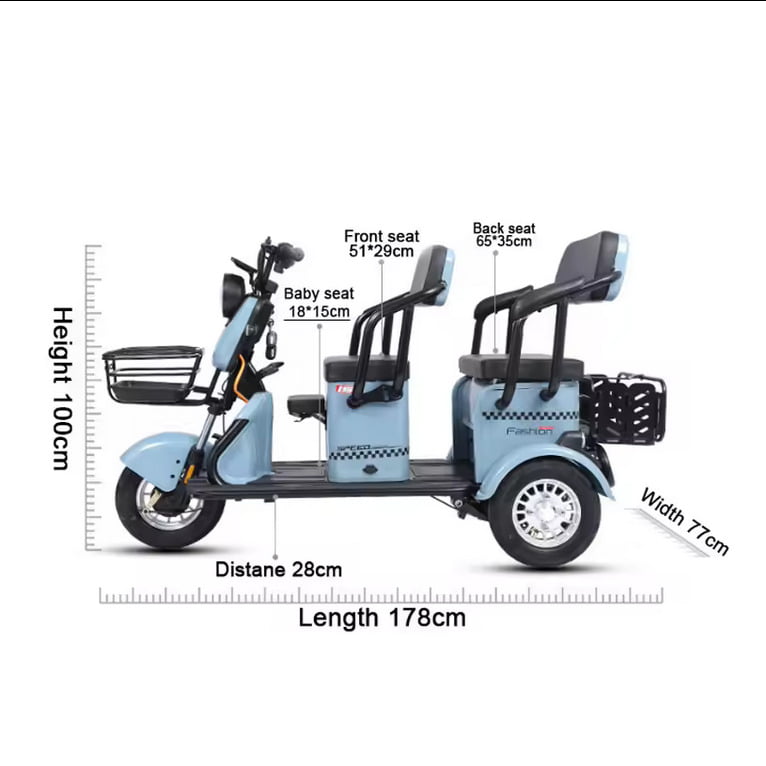
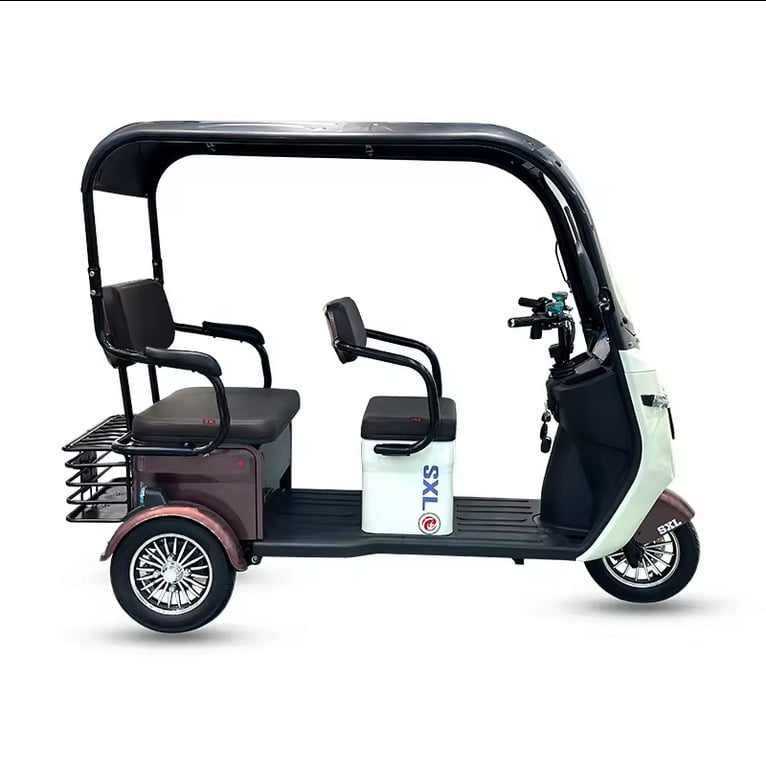

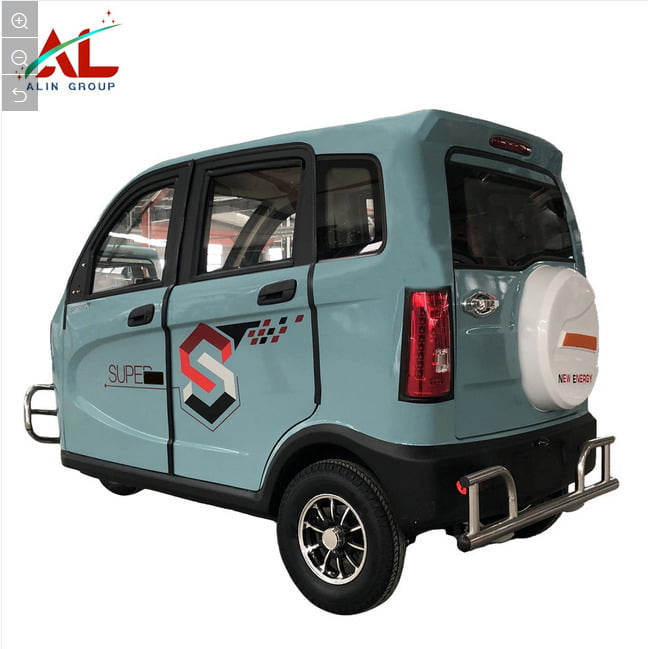
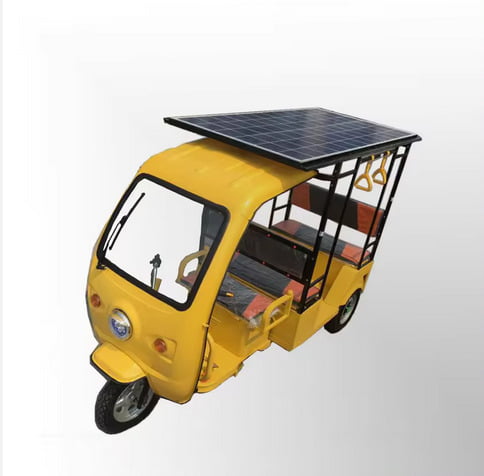
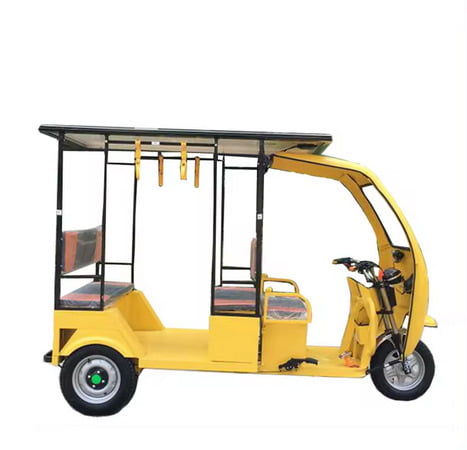
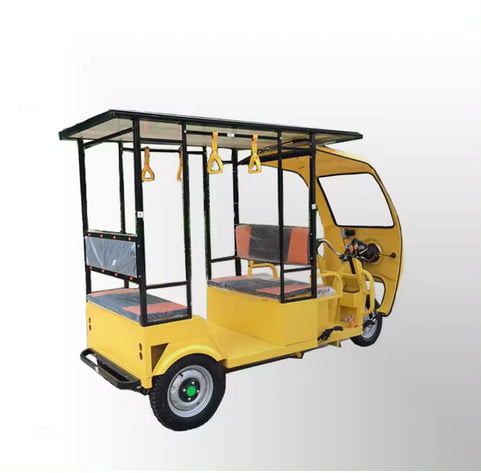
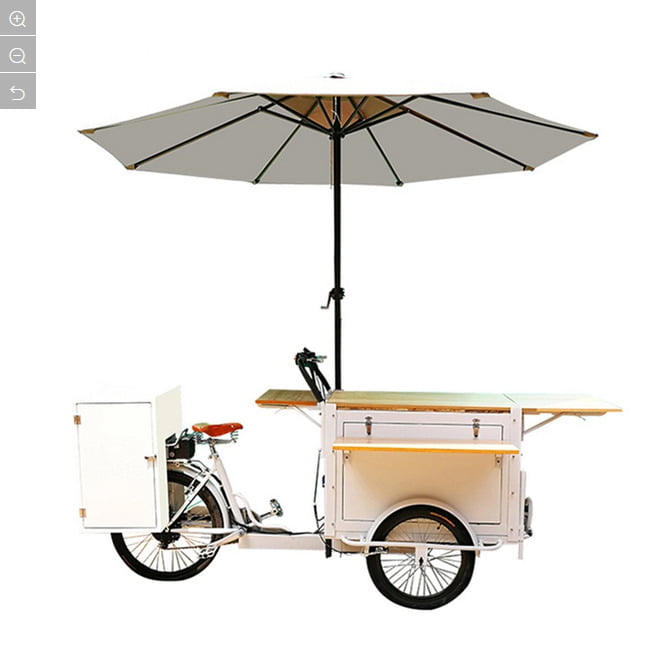
Visit to our suppliers

Solar that starts when you do
With high start-up voltages, string inverters only work when the sun is shining strong. Micro inverters start at very low voltages, so your production happens from sunrise to sunset for a yield that’s 1.5% higher.
ExpoTech Solar Services
Our Solar Products
Become a member of our famliy?

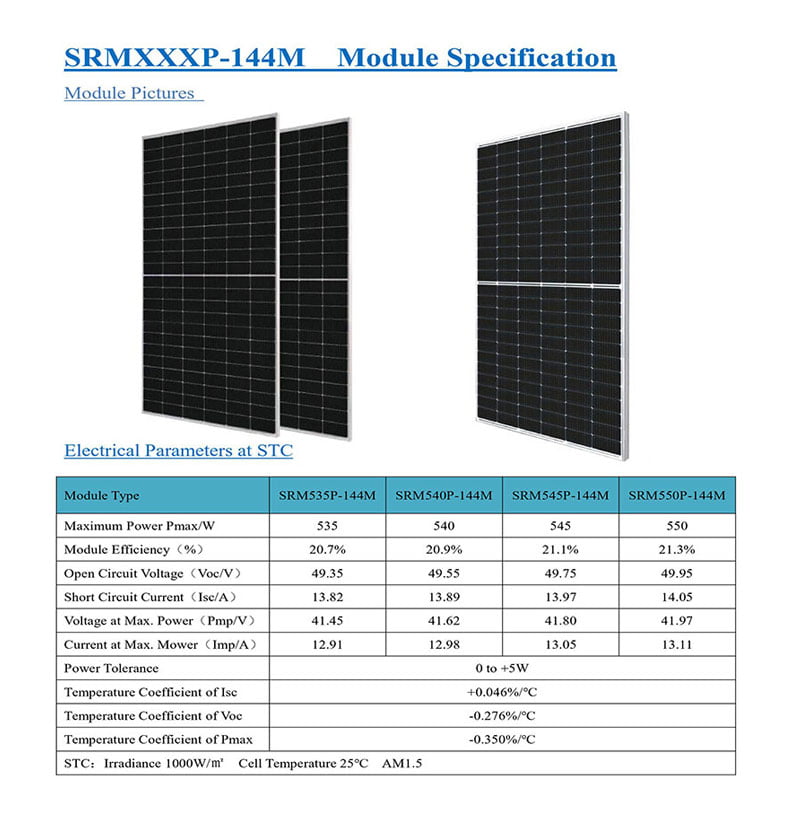
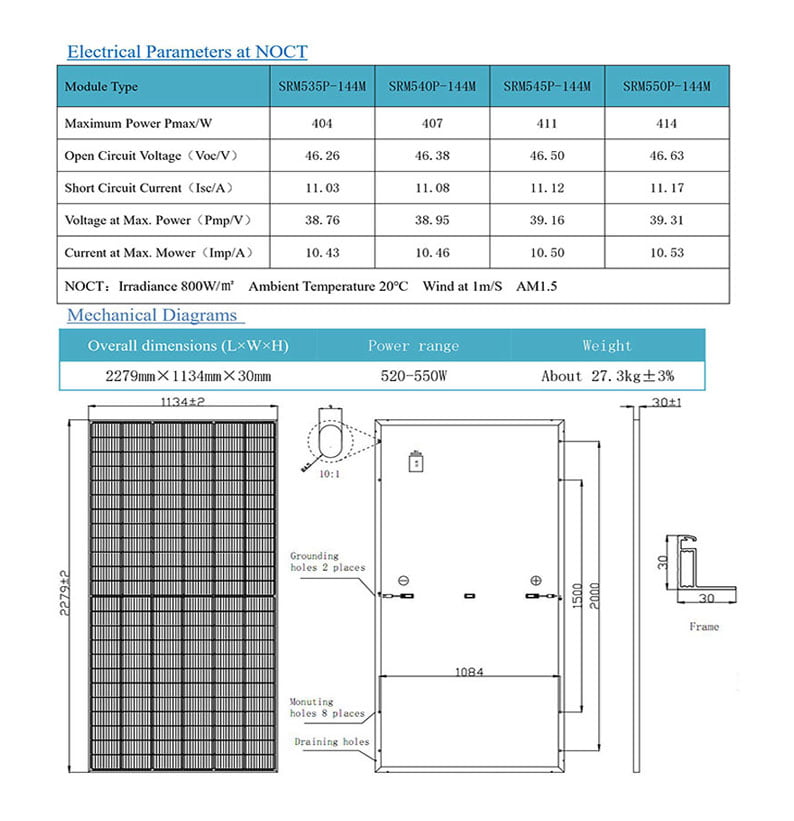
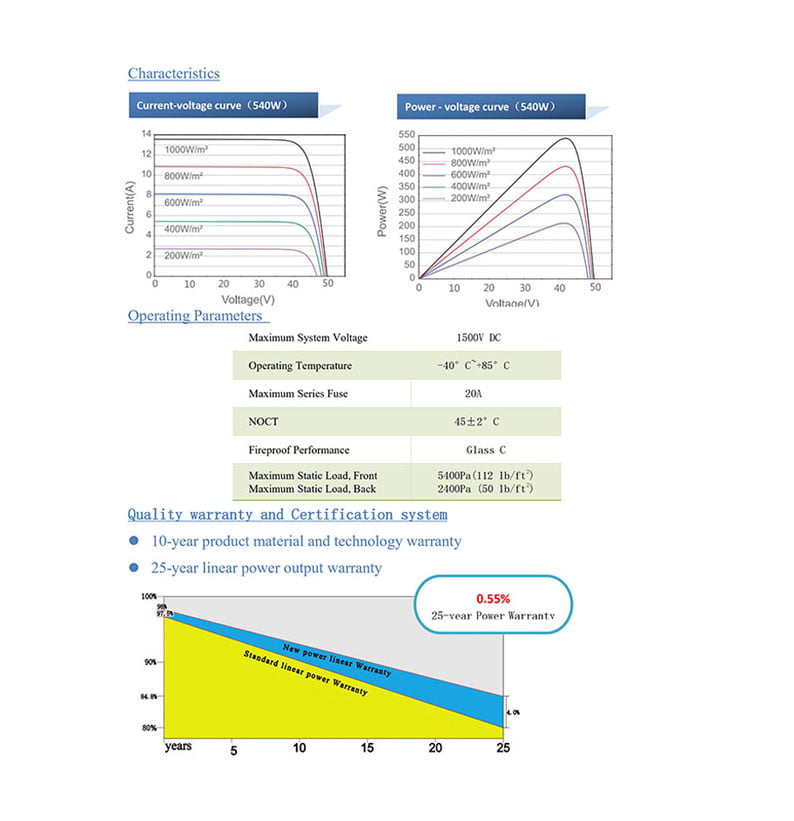
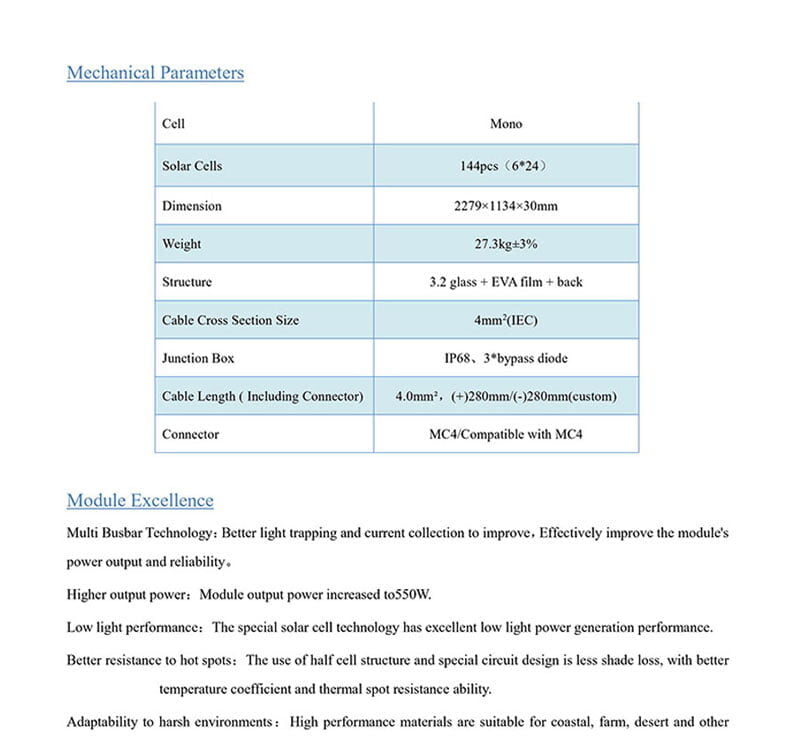
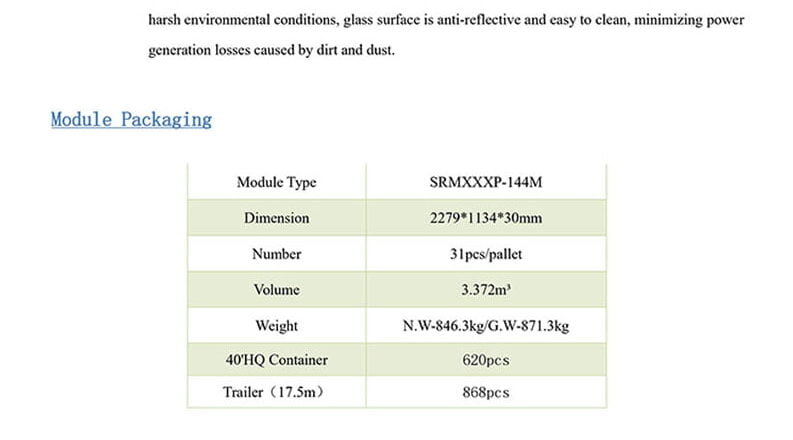
What is a solar farm?
Solar farms are huge ground-mounted solar installations that occupy vast areas of open land.
By huge, we mean solar installations reaching capacities in megawatts (1,000 kilowatts). If you live on a literal farm or just have many acres of space on your property that you’d like to fill with solar panels to generate renewable energy, a solar farm might be right up your alley.
Key takeaways
- Utility-scale solar farms (generally 1 MW – 2,000 MW) sell their electricity to generate a profit for their owner.
- Solar farms typically cost between $0.89 to $1.01 per watt to install.
- The average 1 MW farm can earn roughly $43,500 a year by selling its electricity to utilities. For Bangladesh, the amount will be a bit higher due to hot sunny weather.
- Landowners who lease their land out for a solar farm can earn between $250-$3,000 per acre/year.
- Community solar farms (usually 100 kW – 5 MW) sell their electricity to utilities to reduce the electricity bills of subscribers.
- The under-construction 1,650 MW Mammoth Solar Farm in Indiana will become the largest solar farm in the US upon completion in 2024.
Solar farms are large-scale, ground-mounted solar installations. They use photovoltaic (PV) panels or other means of collecting solar energy, like concentrating solar systems, to harness the sun’s power.
Solar farms are also known as ‘solar parks,’ ‘solar plants’ and ‘solar power stations.’ They operate as power plants, just like the fossil-fueled power plants that have generated electricity for consumers for the last century. In this century, Solar Power is the green energy.
They’re different from rooftop solar systems and even commercial solar power systems in a number of important ways.
- Solar farms take advantage of economies of scale, meaning, by placing large orders for solar panels and other equipment; project developers can purchase the equipment for less.
- Solar power stations can also be located in a more ideal location that’s free from issues like shading from trees.
- Solar farms are decentralized and usually consist of ground-mounted solar panels, installed across large areas.
- In most cases, solar farms provide power to the electric grid and are part of the utility’s energy mix.
There are also different types of large solar projects, like community solar farms and utility-scale solar farms.
Different types of solar farms: Utility solar vs community solar
The biggest difference between utility-scale solar farms and community solar farms is scale: utility-scale solar farms tend to be much larger than community solar.
Utility-scale solar farms can have a capacity of anywhere between 1 MW to 2,000 MW. Community solar farms, on the other hand, are typically under 5 MW in size, and it’s not uncommon to find ones that are under 100 kW.
Another key difference between the two types of solar farm is who they provide their power to.
Community solar farm projects serve subscribers or members who have paid for a share of its power. Utility solar farms, on the other hand, serve the utility company and all of its customers as part of the energy mix it carries on its power lines.
Both utility-scale installations and community solar installations tend to use 500-watt solar panels, which are more powerful than those used in home solar installations.
How much does a solar farm cost?
Solar farm installation costs are typically between $0.89 to $1.01 per watt. That means that a 1 megawatt (MW) solar farm would cost between $890,000 and $1.01 million.
These figures are based on the SEIA’s average national cost figures in Q4 2021. They also assume that you already have the land to build the solar farm on. The price now will be higher. Therefore, 1 megawatt (MW) solar power station may cost $ 1.3 to $1.5 million.
Solar farms are much cheaper to build and operate than rooftop solar systems. SEIA stats show that residential solar panel systems—which are typically under 20 kW—cost $3.06 per watt.
In other words, the cost per watt for a solar farm is well under a third of the cost of installing residential solar power.
The low cost of solar farms is also why utilities are increasingly using solar farms when adding new power generation capacity. Solar isn’t just one of the cheapest sources of renewable energy, it’s now also competitive with fossil fuel energy sources, as well!
Starting a solar farm – key points to consider
Here are the top questions asked by those interested in starting a solar farm on their property:
1. How much land does a solar farm need?
With all the equipment and space between panel rows, a 1 MW solar farm typically needs 2.65-2.80 Acres, according to ExpoTech Research. For a 100 MW solar power station we need 300 Acres of land.
Be aware that with large solar projects, you don’t just need space for the solar arrays. Land is also required to house allied equipment like inverters, and space needs to be left between rows of solar panels for repair and maintenance access.
2. How long does it take to build a solar farm?
Depending on the size of the solar project and the number of people working on it, construction on a solar farm can be completed in a matter of months.
Sitting and permitting, however, is a lot more complicated. It can take upto 2 years to get all the necessary approvals and contracts completed for a solar farm.
After a solar farm is complete and online, it needs little maintenance, and can be serviced about 3–4 times a year.
3. How much money can you make with a solar farm?
In terms of revenue, you can earn in the ballpark of $40,000 per year by selling the electricity from a 1 MW solar farm. For Bangladesh, it may be $50,000 per year.
Here’s an explanation of how solar farms generate revenue.
Utility-scale solar farms sell their power by entering Purchase-Power Agreements for their generation on the wholesale electricity market. This can be done using electricity marketplaces such as LevelTen Energy.
According to LevelTen Energy’s P25 national index, in Q4 2021, solar power traded at $29.75 per MWh. The P25 index shows the 25th percentile of PPAs traded for less than this, while 75% traded for higher, and thus is a pretty conservative figure.
Based on the national average of four peak sun hours per day, we know that the average 1 MW solar farm would make 1,460 MWh per year. That means that the average 1 MW solar farm can expect an annual revenue of roughly $43,500 per year.
These, of course, are just average figures. Your actual revenue can vary significantly based on factors such as solar power production in your area and the going rate for solar generation in the wholesale market.
Moreover, do note that there are wide variations in PPA values based on the wholesale electricity prices in your Regional Transmission Organization area.
How much do solar farm leases pay?
Landowners who rent out their land for a solar farm can earn between $250 and $3,000 per acre a year, according to top solar land lease websites.
This is an option for those who don’t want to build their own solar farm, but rather lend out their property to an external solar developer.
You might be wondering why there’s such a big range of lease rates. It’s because there are many different factors based on where you area which can affect the going price for a land leases; these include:
- Land prices in your area
- Electricity transmission infrastructure near your land
- Substitute uses of your land (i.e. possible agricultural farm income)
- Demand for renewable energy in your state
- State and municipal incentives to solar farm operators
In short, the amount you can earn by leasing out your land for a solar farm really depends on market conditions in your area.
Agreements are generally long-term, between 15 and 20 years, with options to extend for as long as 50 years. They also include annual escalators 1.5 to 2.5% to account for inflation.
Some developers even offer to pay for the leases as a large upfront payment.
Agrivoltaics combines traditional farms with solar farms
Agrivoltaics, also called solar sharing, is using the same land for both agricultural and solar development.
A typical agrivoltaic solar system consists of ground-mounted solar arrays with crops planted either beneath or between the rows of solar panels. The panels can be installed on mounts that are tall enough to let farming equipment pass below.
At first, it might not seem like it makes sense to plant crops beneath solar panels. After all, don’t plants need light to survive? Yes, but many crops don’t need as much sun as you think. In fact, too much sun can be a bad thing. Agrivoltaic systems can be designed to let the optimal amount of light reach crops so they can grow, without allowing too much light to get through and cause the plants stress.
Here are a few reasons why farmers choose agrivoltaics:
- Lowers electricity costs:Generating your own solar power is cheaper than buying from the grid, and with electricity making up between 1% and 6% of the average farm’s total operating costs, those savings can be significant!
- Decrease water usage:Plants have a light saturation point, where sunlight hitting a plant is no longer helping it grow, but instead increases stress and water demand. Properly designed agrivoltaic systems can prevent plant stress and decrease water demand.
- Increased crop production: Many types of crops can thrive, and oftentimes grow better when shaded by solar panels. In a study conducted by the University of Arizona, tomato plants in agrivoltaic systems produced double the amount of fruit of those in a control group without solar panels. Other crops, such as lettuce and jalapenos, yielded the same amount of fruit but used substantially less water to do so.
- Diversified revenue stream for farmers: Being a farmer has gotten harder and harder over the years. Through programs like virtual net metering and solar renewable energy credit markets, farmers can have another source of income besides their crops, without too much additional work.
What are the largest solar farms?
Right now, solar farms are enjoying their time in the sun—no pun intended. The solar industry is building ever-bigger solar farms thanks to the improved economics of solar energy generation, and the desire of governments to switch to renewable energy to avoid climate change.
The biggest solar farm in the United States
The Copper Mountain Solar facility, located in Eldorado Valley, Nevada is currently the biggest solar farm in the U.S. It has a total installed capacity of 816 MW.
It started its life in 2010 as a 86MW project, and has since undergone four additional expansions. The most recent addition, a 250MW unit that went online in March 2021, helped Copper Mountain overtake the Solar Star project in California as America’s largest solar facility.
Mammoth Solar Farm – set to be the biggest in the US
The Mammoth Solar is a $1.5 billion project currently under construction in northern Indiana. Once completed, it will have a total energy generation capacity of 1,650 MW, which will make it twice as big as the current largest solar farm in the US (Copper Mountain).
The aptly-named Mammoth Solar Project will cover an area of 13,000 acres, and have a total of roughly 2.85 million solar panels.
The project is scheduled to become fully operational in 2024.
The largest solar farm in the world
As of March 2022, the largest solar farm in the world is Bhadla Solar Park, in the Rajasthan desert region of India.
The solar farm covers an enormous area of 14,000 acres. It has an energy generating capacity of 2,245 MW, or 2.2 gigawatts.
It is nearly three times the capacity of America’s current biggest solar farm, Copper Mountain.
The future of solar farms
Moving forward, community solar projects, utility-scale solar projects and rooftop solar will all be part of the renewable energy solution providing clean energy around the US and replacing fossil fuel power.
Large-scale solar will continue to get cheaper as developers of solar farms find more ways to reduce financing costs and equipment costs keep coming down. Expect to see many more solar farms, and even bigger ones, in the near future.
How Much Money Does 1 Acre Solar Panels Make? Is It Lucrative?
There are several factors to consider when determining the profit margin of an acre of a solar plant, but generally speaking, you can earn anything between $21,250- $42,500 per acre each year.
The rates can be lower or higher than this after factoring in some variables.
A solar farm income per acre calculator shows a higher reading when dealing with hundreds or thousands of acres due to the economies of scale.
However, there are some other factors that impact how much you can make.
Factors Affecting Solar Farm Cost
Here are some of the factors that affect the cost of installing a solar farm.
1. Size of Land
Usually, solar farms are mega projects that need specific land sizes to be more profitable.
One rule is that you will require 1 kW from the panels every one hundred square feet, and the more land you have, the higher the development costs and the more the power output.
2. Sunlight Intensity
One of the essential considerations when taking on the project is ensuring that your land receives sufficient and intense sunlight.
Otherwise, shadows and poor weather can reduce the intensity, affecting the power output and making the business less lucrative.
3. Soil Quality
It may seem strange, but you have to build on land to set up a solar farm. If the soil is unstable or tasking to develop (like a boggy or swampy area), it means additional costs to clear, and if it is impossible to penetrate the soil, you may have to end the entire project.
4. Distance to the Grid
Availability of the necessary infrastructure is another critical concern for landowners opting for solar farming. If the grid is accessible, you won’t have to incur additional costs to build one.
If you want to minimize the capital, your land should be less than 2 miles from a substation and at least 1000 ft near a phase three power.
Once you account for all these factors, the next step is determining the land’s value and starting negotiations. It becomes more straightforward for the developer to set the rent and identify how many acres are necessary and the duration of the lease.
How To Use a Solar Farm Income Per Acre Calculator
Factoring in various aspects, you can make about $21,250—$42,500 annually, translating to $1770—$3540 per acre each month.
Therefore, you can estimate your total profits based on your farm size.
Luckily, a solar farm income per acre calculator will give you the most precise data considering all the initial costs and other deductions.
An experienced lawyer can also help you negotiate a fantastic deal that considers adjustments like inflation.
What Is the Solar Farm Profit Margin: Positive ROI
Most solar farms can earn up to $40,000 for every MW (Megawatt) installed; therefore, the profit margin lies between 10%-20%.
These numbers will, however, deviate based on some necessary costs.
You must also account for how much electricity you use, rates, project size, and the total installation fees; luckily, the return on investment is typically high with low maintenance costs.
How Does the Solar Farm Income Calculator Work?
The solar farm income per acre calculator is the simplest way to determine your solar farm’s profitability. It is an automated process that gives you instant results that you can refer to ensure that the business is lucrative.
The system will ask for vital details like financing, farm size, how much power the farm creates in a year, and how much it costs to install the project. The utility rate and whether you are financing a debt are also critical to help generate the total value.
Once you enter all the key areas, the tool will run the breakdown, allowing you to save the generated results and download a spreadsheet or pdf for easy access.
How Much Solar Farm Income Per Acre Per Year Should I Expect?
On average, you can expect a return on investment of $21,250—$42,500 per acre every year. However, these figures will vary depending on individual projects. To maximize your returns, you can erect the project on a massive land to enjoy the economies of scale.
When dealing with hundreds of acres, the initial capital is high, but it will translate to an equally higher profit margin in hundreds of thousands. Small farms, on the other hand, don’t have high profits given the low power output.
How Much Does 1 Acre Solar Farm Cost To Make?
Adopting solar farming on your land can be costly, but the ROI you expect will compensate for it. You will pay the utility costs and buy solar panels and other essential equipment like inverters, transformers, batteries, and wiring.
Cumulatively, you will spend $400,000—$500,000 an acre when developing a solar farm, besides the annual maintenance costs.
Solar Farm Income Per Acre: How Much Does a Solar Farm Cost Per Acre To Develop?
According to (SEIA) Solar Energy Industries Association’s 2021 report, installing a PV system costs $0.77-$1.36 a watt. On the other hand, a residential system rates at $2.50- $3.50 a watt, and developers save a fortune when buying for massive plant projects.
Experts usually pay about $3 million for each Megawatt when erecting a farm, meaning it will cost you around $500,000 to establish one acre. For an excellent ROI, developers prefer projects of more than 1 MW or more than 5 acres.
What Are the Solar Farm Land Requirements?
Before declaring a land suitable for solar farming, developers must make their assessment counterchecking against the requirements below.
- Land Size
Each solar project is treated differently, but still, there should be enough space to set up all the panels and other equipment. Sometimes 5-10 acres suffice, but an average plant is usually 30-40 acres. ExpoTech Technological Innovation is working on three Solar Power Stations each over 300 acres of land.
The general rule is that the larger the land, the bigger the project, hence the generation of more revenue per annum.
- Landscape
Flat land is the suitable terrain for a solar farm, but developers often prefer slightly sloping lands that offer more sun exposure. Small hills are also okay if the slopes are not too steep and the panels can still attain sunlight.
You will also have to remove any vegetation on the land that would obstruct the view and watch out for impenetrable soil that would make the project impossible or tasking to complete.
- Local Regulations
It is imperative to check the laws of land use before initiating the project because some places prohibit solar farming, making it impossible for the developer to obtain the necessary permits.
Similarly, you cannot go through with the plan if your land is under conservation or environmental laws prohibit interference, mainly if an endangered plant or animal species stay there.
- Proximity to Infrastructure
You may need proper infrastructure to support the entire project, and the first thing the developer will check is the location of the utility grid and other related issues. If the site is too far, the project will be more expensive, and sometimes, you will have to cancel everything altogether.
Types of costs on a Solar Power Station
The balance of system (BoS) costs can be broken down into three broad categories: non-module and inverter hardware, installation costs, and soft costs. These three categories can be broken down in more detailed sub-categories.
Non-module hardware costs:
Cabling:
- All direct current (DC) components, such as DC cables, connectors and DC combiner boxes
- All AC low voltage components, such as cables, connectors and AC combiner boxes
Racking and mounting:
- Complete mounting system including ramming profiles, foundations and all material for assembling
- All material necessary for mounting the inverter and all type of combiner boxes
Safety and security:
- Fences
- Camera and security system
- All equipment fixed installed as theft and/or fire protection
Grid connection:
- All medium voltage cables and connectors
- Switch g ears and control boards
- Transformers and/or transformer stations
- Substation and housing
- Meter(s)
Monitoring and control
- Monitoring system
- Meteorological system (e.g., irradiation and temperature sensor)
- Supervisory control and data system
Installation costs
- Mechanical installation (construction)
- Access and internal roads
- Preparation for cable routing (e.g., cable trench, cable trunking system)
- Installation of mounting/racking system
- Installation of solar modules and inverters
- Installation of grid connection components
- Uploading and transport of components/equipment
Electrical installation
- DC installation (module interconnection and DC cabling)
- AC medium voltage installation
- Installation of monitoring and control system
- Electrical tests (e.g., DC string measurement)
- Inspection (construction supervision)
- Construction supervision
- Health and safety inspections
- Operations and maintenance (OM costs)
Operations and maintenance, usually found as O&M, costs includes all the expenditure categories since the beginning of PV plant operations. Examples of them are PV module cleaning, monitoring or on-site inspections.
What is a Solar System?
A Solar System is a system which converts light energy into electrical energy, stores this electrical energy and also consumes this stored energy.
Main Requirement:
Sunlight
Why Solar?
Unlike Petrol, Solar energy from the Sun is free of cost and you don’t pay taxes on it. The prices of fuel will always increase, but as production of solar panels increase the price of these panels shall decrease. You can store the converted solar energy in a BATTERY. A solar system can be assembled in any OUTDOOR WORKSHOP. Solar Energy is a Green Energy, it’s a Renewable Source of Energy and it’s good for our planet. And as long as the sun shines your system will be powered.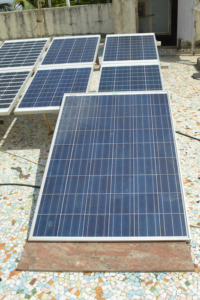
Step 1: Things You Will Need
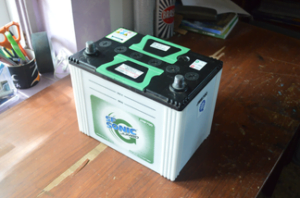
Electrical Components:
- Solar Panel- 12V, 50W or more
- Lead Acid Battery- 12V, 32Ah or 65Ah or more
- Charge Controller and Charge Indicator
- Battery Connectors (Lugs/ Ring Terminals)
- 5mm or 3mm Wire
- Inverter- 12VDC to 220VAC, 400W or 600W
- Switch Box/ Extension Box
- Power Consumption Meter
- 2 X Circuit Breaker
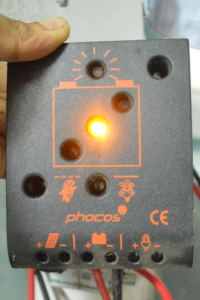 Tools:
Tools:
- Spanner Set
- Soldering Iron
- Soldering Wire
- Wire Cutter
- Screwdriver
- Multimeter
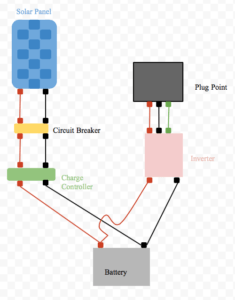
Step 2: Circuit Diagram
Follow the connections in the circuit diagram. The Red wires are Positive, Black are Negative. The Red wire between the Inverter and Plug Point is Live, Black is Neutral and Green is Ground or Earthing.
Be Careful while making connections. Do not switch anything ON while connecting all the parts and components.
Do not interchange the polarity and stick to the colour coding of the wires- Red, Black & Green.
Cut all the wires to length using the wire cutter and strip the PVC covering of the ends of the wire using the wire stripper.
Step 3: Solar Panel Connections
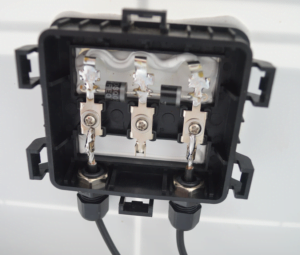
Solar Panel Connections
The Solar Panel is the device which converts the light emitted by the Sun into electrical energy. When the suns rays fall onto the solar cells, the electrons in the solar cells get excited and begin to flow, thus producing electrical energy.
(The flow of electrons is called Electricity)
Connect the wires to the Solar Panel. Let the Red wire be connected to the positive (+) terminal and the black wire to the negative (-) terminal.
Connect the other end of the red wire to the input of the first Circuit Breaker. Connect the other end of the black wire to the input of the second Circuit Breaker.
Tighten the screws of the terminals using a Screwdriver.
The diodes in the Solar Panel Connection Box are used to maintain the polarity of the solar panel. If the positive wire is connected i the middle terminal, the voltage is halfed.
Step 4: Circuit Breaker Connections
Circuit Breaker Connections
The Circuit Breaker is a kind of Switch which switches OFF/shuts down/shuts OFF when a certain amount of current passes through it. It will shut OFF only when the current exceeds the given specified amount. E.g.: 15A etc. It also shuts OFF when there’s a short circuit. The reason one MUST connect the Circuit Breaker between the solar panel and the rest of the system is to prevent the entire system from lightning. Lightning can cause the battery to explode and also damage the entire system. The Circuit Breaker immediately shuts OFF when lightning strikes the Solar Panel.
Connect the output of the first Circuit Breaker to another red wire. Connect the other end of this red wire to the Charge controller.
Connect the output of the second Circuit Breaker to another black wire. Connect the other end of this black wire to the Charge controller.
Tighten the screws of the terminals using a Screwdriver.
Step 5: Charge Controller Connections
Charge Controller Connections.
The Charge Controller is an electronic circuit which regulates the charging of the battery and also shows the battery level. The Charge controller prevents the battery from overcharging. Once the charge controller detects that the battery is fully charged it stops charging the battery. The charge controller also uses a voltage regulator to regulate the input voltage given from the battery in order to give a stable constant output voltage. E.g.: Consider a 12V solar panel which is giving 12.5V. The charge controller will regulate and convert the 12.5V into a constant and stable 12V.
Connect a red wire to the output of the charge controller’s positive terminal and connect the end of the wire to the positive terminal of the battery.
Connect a black wire to the output of the charge controller’s negative terminal and connect the end of the wire to the negative terminal of the battery.
Tighten the screws of the terminals using a Screwdriver.
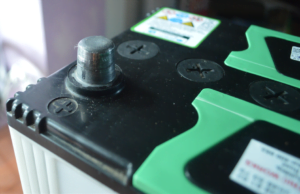
Step 6: Battery Connections
- Battery Terminal.
- Red wire connected to the Positive (+) terminal of the battery.
- Black wire connected to the Negative (-) terminal of the battery.
The Battery is a device which stores the electrical energy in the form of chemical energy. A Lead Acid battery contains lead acid in it. As the battery is used it releases hydrogen gas. This hydrogen gas is too little to affect humans.
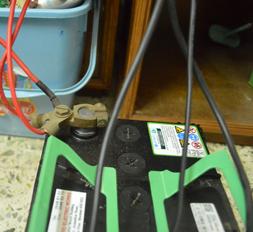
Solder the battery connectors to the wires. This will ensure that the wire doesn’t come out and also prevents shorting. Connect the battery connectors to the Battery terminal.
Once you have connected the terminals of the battery to the output of the charge controller, you can connect the inverter to the battery terminals too.
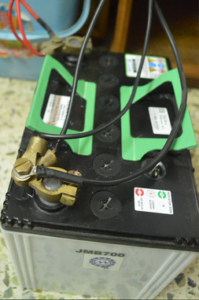 Connect one end of a red wire to the positive battery terminal and its other end to the positive DC terminal of the inverter.
Connect one end of a red wire to the positive battery terminal and its other end to the positive DC terminal of the inverter.
Connect one end of a black wire to the negative battery terminal and its other end to the negative DC terminal of the inverter.
Step 7: Inverter Connections
- Inverter output connections.
- Cooling Fan of Inverter.
The Inverter is an electronic device which converts a low voltage DC input into a high voltage AC output. E.g.: An inverter can convert 12VDC (from battery) into 220VAC (to appliance). An inverter is necessary if your appliances run on 220V AC.
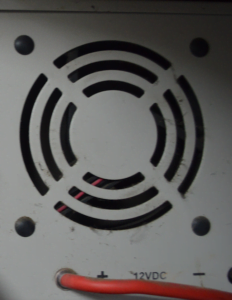
The output of an inverter has three terminals namely Live, Neutral and Ground. Connect your Power Consumption Meter to the three terminals of the inverters output.
Step 8: Power Meter Connections
- Power Meter Connections.
- Power Meter Connections.
- Power Meter Readings (58KWh consumed).
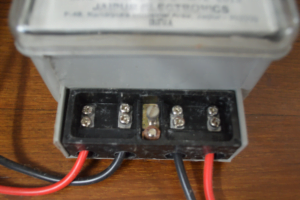
The power consumption meter measure the running total of the amount of power-hours that have been consumed by the appliances. It is measured in Kilo Watt Hours (KWh).
Connect the output of the power meter to the Plug point connections.
TEST: Test the solar system by plugging a CFL bulb into the plug point/ socket and see if it comes on. Make sure the switches are ON and everything is connected.
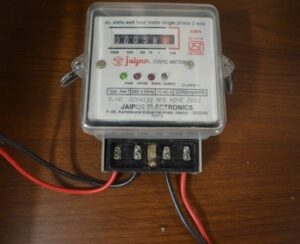
Step 9: Calculations & Expanding Your Solar System
Calculations (example calculation): This is an example. Using the formulas given below larger Solar systems with higher capacities can be made. Use these calculations to expand your solar system.
Appliance Load:
Appliance Quantity Wattage Total
Light Bulb 2 10W 20W
Fan 1 20W 20W
40W
Hence the total load is 40W.
Backup Time/ Running Time:
Now say you want to run these appliances for 4 Hours.
The total back up time will be 4 hours.
Wh-Then total Load x Hour (4hour × 40watt) = 160Wh.
Battery Amperage-
Battery Voltage= 12V & Watt Hour=160Wh
Therefore I= Watt Hour/ Battery Voltage
I=160/12= 13.33Ah ~ 14
I= 14Ah
Solar panel-
Generally a battery charging current = 10% of it’s AH Charging current = 1.4 A ( )
Power (W) = Current (A) X Voltage (V)
Solar panel needed = 1.4 A 12 V = 16.8 W
Charge controller-12 Volt, 1.4 Amp Thus a solar system is calculated
(System loss is not added with this measurement, so approximate 25% system loss will be added.)
Conclusion: So from calculation
- Solar panel =20 watt (20 watt is available)
- Battery = 12volt, 15AH (15AH, 20AH battery available)
- Charge controller=12volt, 2A (2Achargecontrolleravailable)
Efficiency of Solar panel: Here output power is the power we get from solar panel. Input power is proportional to the amount of light falling on the solar panel. Hence do not keep the Panel in shade.
Step 10: Caution, Safety, Things to Remember
- Safety Rules written on Battery.
- Caution and After Use rules on Battery.
- Charging Guide.
Safety:
- While soldering do not touch the tip of the soldering iron.
- Wear Dark Glasses while installing the Solar Panel.
- Do not look directly at the Sun.
Caution:
- Keep the battery away from sparks, cigarettes, open flames, etc. These can result ion explosions.
- Do not throw water near the battery or inverter.
- Avoid metallic contact between the terminals of the battery, as this can cause short circuiting.
- Lead Acid batteries generate Hydrogen Gas.
- Do not hit, hammer or damage the battery, it contains lead acid and can leak.
- Make sure the output of the inverter is grounded/earthed.
- Do not block the vents of the cooling fan in order to prevent over heating of the inverter.
- Do not interchange the polarity of any of the connections.
Things to Remember:
- Do not forget to install the Circuit Breakers.
- Do not switch the system on until all the connections have been made.
- The lead acid in the battery must be replaced at least once a year.
- Do not switch on the inverter if the charge controller is displaying the ‘Overload’ signal.
- Always use low consumption appliances such as CFL or LED bulbs.
After Use:
- This battery contains lead acid and sulphuric acid. Do not just through it in the garbage as it is hazardous to the environment.
- At the end of the battery life, return the battery to the authorised dealer for disposal.
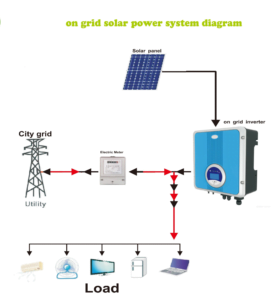
On Grid solar home system features:
- This system makes use of solar energy to provide convenient and highly-efficient clean electric power to households.
- It’s featured with high-efficiency, easy-installation, economic and environment-friendly, etc.
- This system not need to use battery, solar power will directly to city power, save the cost and high efficiency.
Solar power system Advantages:
- High conversion efficiency, high-transmission rate.
- Energy saving, environmental-friendly.
- Advanced technology, strict quality control system.
- Easy installation, safe operation, free maintenance.
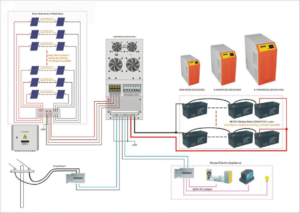
Off grid solar power system for home with deep cycle gel battery:
Off Grid solar home system features:
- This system makes use of solar energy to provide convenient and highly-efficient clean electric power to households.
- It’s featured with high-efficiency, easy-installation, economic and environment-friendly, etc.
- This system need to use battery, solar power will be saved in battery, save the cost and high efficiency.
- High conversion efficiency, high-transmission rate. It has advanced technology with strict quality control system.
What are the environmental benefits of solar energy?
Solar power, like other renewable energy resources, has many environmental and health benefits. Going solar reduces greenhouse gas emissions and results in fewer air pollutants like sulphur dioxide and particulate matter, which can cause health problems.
Net metering is the system that utilities use to credit solar energy system owners for the electricity produced by their solar panels. With net metering, you only pay for the electricity that you use beyond what your solar panels can generate.
Solar panels absorb the sun’s energy throughout the day and convert it into direct current (DC) electricity. Most homes and businesses run on alternating current (AC) electricity, so the DC electricity is then passed through an inverter to convert it to usable AC electricity. At that point, you either use the electricity in your house or send it back to the electric grid.
The amount of power your solar energy system can generate is dependent on sunlight. As a result, your solar panels will produce slightly less energy when the weather is cloudy, and no energy at night. However, because of high electricity costs and financial incentives, solar is a smart decision even if you live in a cloudy city.
When you install solar panels on your property, you will still be connected to the grid. This allows you to draw from the grid when your system is not producing all of the power that you need, and send power back to the grid when you produce more than you use. It is possible to go off the grid with a solar energy system that includes battery storage, but it will cost significantly more and is unnecessary for the majority of homeowners or flat owners or business owners. ExpoTech intends to do install solar powers in all buildings in Dhaka and elsewhere in Bangladesh.
If your solar panel system is connected to the grid, it will shut off in the event of a blackout or in Bangladesh it is termed “load-shading”. This is to prevent emergency responders and electricity utility repair-people from being injured by your panels sending power back to the grid. However, there are certain inverters you can buy from ExpoTech that provide backup power in a blackout when paired with a battery.
Southerly-facing roofs with little to no shade and enough space to fit a solar panel system are ideal for installing solar. However, in many cases there are workarounds if your home doesn’t have the ideal solar roof – east and west facing roofs can still produce enough power to make it worth it.
The size of your solar energy system will depend on how much electricity you use on a monthly basis, as well as the weather conditions where you live. ExpoTech Solar team will take a look at your electric bill going back 12 months and estimate a custom-sized solar array that fits your specific needs based on annual production and usage.
In general, solar panels are very durable and capable of withstanding snow, wind, and hail. Since Bangladesh has no snow the durability of panels are much higher than any other country. Your system should continue to generate electricity for 25 to 35 years with very minor (if any) maintenance issues during that period.
When you install a solar energy system on your property, you save money on your electricity bills and protect yourself against rising electricity rates in the future. How much you can save depends on the utility rates and solar policies in your area, but going solar is a smart investment regardless of where you live.
The benefits of solar energy for the people of Bangladesh and ultimately for the Government is unquestionable and unparallel to fathom. The environment of Bangladesh will change forever and ExpoTech Technological Innovation wants to become the part of that change and everlasting benefit.
Reducing the impact of CO2 emissions on our planet depends on our collective effort to use a greater proportion of renewable energy. In the advent of electric vehicles and with the rapidly increasing use of electricity powered devices, all parties involved in the production, distribution and consumption of energy have the opportunity to change the game.

Vegetable plants sprout from the ground last summer at the Big Lake solar farm, where a pilot project is experimenting with combining solar energy production and agriculture.
Drive on Sunshine
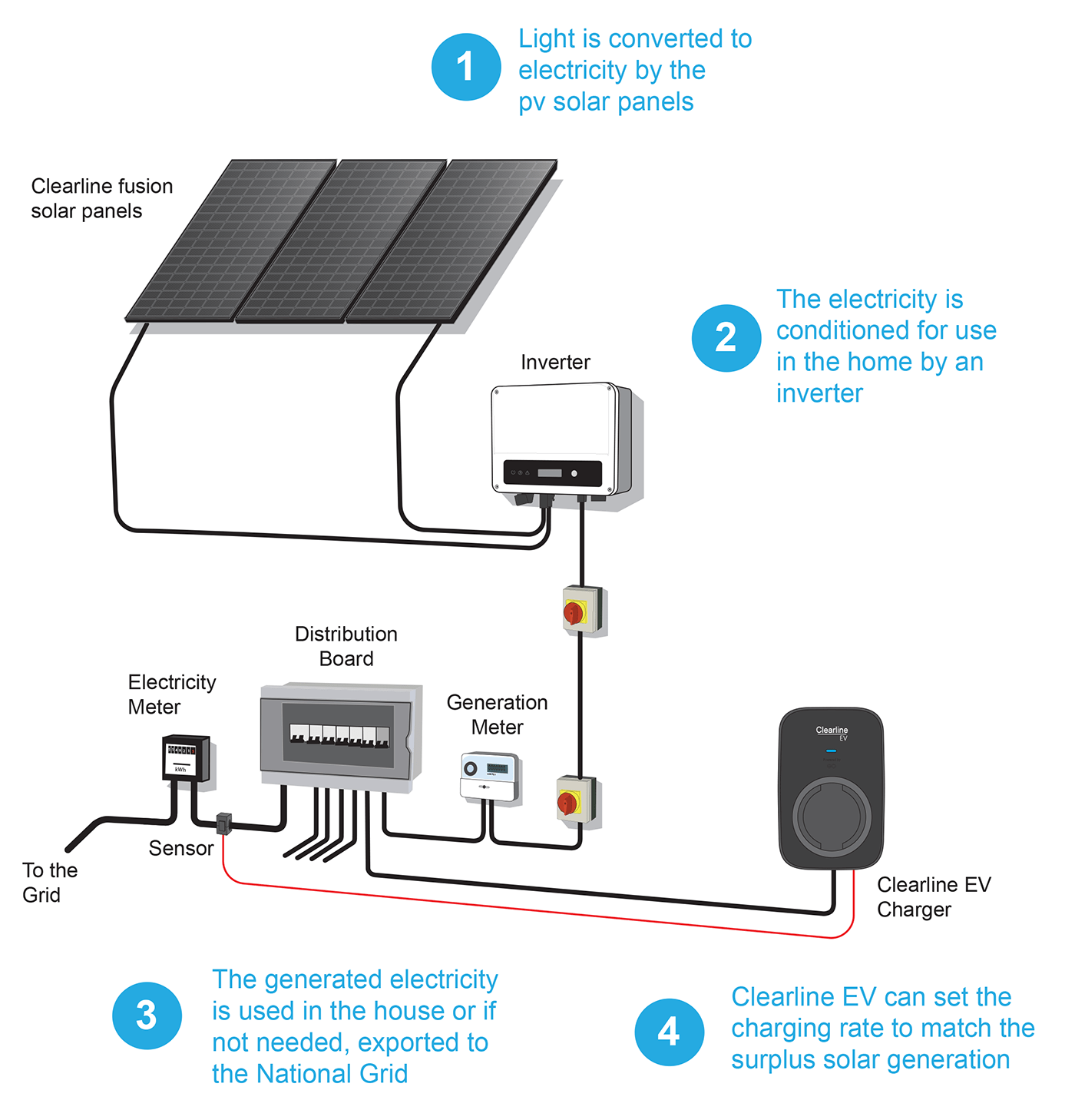 For homes equipped with solar panels, Clearline EV monitors the amount of surplus solar power being generated (the amount by which solar generation exceeds other electrical demands in the building). You can set the charging rate to track the surplus solar power in the EO app. In this mode Clearline EV will control the charging rate to follow surplus solar generation between a maximum of 7kW and a minimum safe charging power of 1.4kW, ensuring that, as far as is possible, your car is filled up with clean, free solar energy.
For homes equipped with solar panels, Clearline EV monitors the amount of surplus solar power being generated (the amount by which solar generation exceeds other electrical demands in the building). You can set the charging rate to track the surplus solar power in the EO app. In this mode Clearline EV will control the charging rate to follow surplus solar generation between a maximum of 7kW and a minimum safe charging power of 1.4kW, ensuring that, as far as is possible, your car is filled up with clean, free solar energy.
Active Load Management
Active Load Management is also included as a standard option. Clearline EV monitors the electrical current flowing into the building and adjusts its charging rate to keep the total current below a set maximum value, protecting electrical circuits in the building.
Simple, User-friendly Control in the Palm of Your Hand
With the EO app, controlling Clearline EV couldn’t be easier. You can schedule charging times to take advantage of low-cost energy tariffs, set Clearline EV to track the generation from your solar panels and disable the charger when you’re not home.

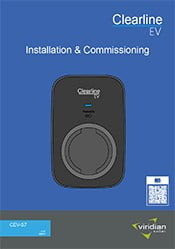

Why go solar
As the world shifts to more sustainable energy, more people than ever before are considering solar energy for the home. But why go solar? Is sustainability the only advantage? And what other benefits can you unlock by switching to solar and joining the energy revolution?
From saving money to future-proofing your energy supply and breaking free from traditional providers, the advantages are numerous. Solar is an investment that pays off now – and will continue to pay off for years to come.
Read on to learn how.
Reduce your carbon footprint
Major energy providers are slow to adopt green technologies. Some are embracing change and switching to sustainable ways of generating electricity, but fossil fuels remain an embedded part of how most energy providers work. When you switch to solar, you’re reducing your dependence on the grid. The energy you produce isn’t harmful to the environment – it’s harnessing the environment. But it doesn’t stop there. By feeding excess energy that you don’t use back to the grid, you’re reducing the amount of energy that providers need to generate through fossil fuels. This compounds the impact on not just your carbon footprint, but the shared carbon footprint of the world.
Reduce your energy bill
Energy costs are a significant expense, particularly as we all consume more electricity in our homes. This is likely to increase even further with the rise of electric vehicles. Solar panels offer a free, reliable source of clean energy with no energy firm markups. With efficient performance and the right storage, you can generate the vast majority of the electricity you need. Even if you still use some energy from the grid, you’ll be significantly reducing your spend for years to come.
Build a brighter future
Our planet is at the tipping point of a climate crisis. The future depends on everyone making smart, sustainable decisions now to safeguard the world tomorrow. And that means moving away from fossil fuels and harm to the environment as part of electricity production and supply. Together, we can lead the change to a kinder, more sustainable future – one where energy is less harmful, wasted energy is reduced, and the planet is in safe hands. With efficient performance and the right storage, you can generate the vast majority of the electricity you need. Even if you still use some energy from the grid, you’ll be significantly reducing your spend for years to come.
Achieve energy independence
Most of us are dependent on energy providers for our electricity. They’re ultimately in control of where energy comes from, how it’s produced, and how much it costs. We’re waiting on our provider to take action. Sudden price increases? Whatever the energy provider changes is unavoidable. Solar means you’re in control of your own energy. You can use electricity in your home, store excess for later use, and even sell it back to the grid in a way that makes sense for you. As a result, you can break your ties to big corporations and reduce your dependency on third parties for your power.
Live resiliently
We all depend on electricity in our homes or businesses – and that means we depend on our electricity providers to keep us connected. In the event of a power cut or outage, there’s nothing you can do but wait for your provider to take action and resolve the issue. With solar, you can take a more intelligent approach to energy by controlling your own source, including storage and backups to keep you connected, whatever happens. In the event of an issue with your solar installation, you can take immediate action to resolve the issue at your own pace.
Increase your property’s value
Reducing your environmental impact and energy costs is a massive benefit for you – and that makes it a compelling feature if you ever sell your home. In a competitive property market, homes with solar sell for more than those without. Investing in a ready-to-use solar installation is creating a valuable asset for your home. As a result, your property will stand out from others and, in the majority of cases, sell for more. So you can save money in the short term, keep saving in the medium term, and recoup more of your investment when you move to somewhere new
Prepare for the future of transport
We’re all gradually making the transition to electric vehicles. Major manufacturers have all pledged to eliminate new petrol and diesel vehicles within the next few years. Meanwhile, the average cost of an electric vehicle is steadily decreasing. While this is significantly better for the environment, demand for electricity will surge. If you’re still dependent on electricity firms, that means your costs will surge too. Investing in solar energy is a great way to get ahead of your needs with an affordable, environmentally friendly way to fuel your vehicle.
Easy to manage and maintain
Working with your solar installation no longer requires specialist expertise. Solar boasts extremely limited day-to-day maintenance, while our smart monitoring app makes routine changes and monitoring simple. For the most part, you can ignore your solar installation once it’s up and running. Maintaining your panels is as simple as an annual check and a regular clean by a trained professional. They can also help you keep your system optimized for the best possible performance, including checking for overhanging trees and other sources of shade.
Future-proof your energy costs
Energy from traditional providers is getting more expensive every single year. As traditional fossil fuel sources of energy become more limited, price increases are only going to get more regular and more significant. Solar is an investment now that removes you from these rising costs forever. You can recoup your investment costs in just a few years, then never face another sudden price increase again. Even better, you can remove the need to constantly compare tariffs, energy providers and costs in order to get the most competitive price. Solar is the best deal, every time.
Earn a return on your investment
Once your solar installation is up and running, you’ll start seeing big savings on your electricity costs. This is true even if you still need to use electricity from the grid on occasion. However, there’s another way to earn a bigger return on your investment. Any excess energy you create with your panels can typically be sold back into the grid. This process can be fully automated, happening in the background while you use your electricity as normal. As a result, you can offset your own energy costs even further and turn your solar installation into a smart way to earn.
Performance guaranteed
Solar is now a mature technology, where innovation is focused on improving performance and efficiency. That means that most solar panels, micro-inverters and other components are backed by long-lasting warranties. At the same time, professional installers have become experts on maximizing your energy production. When you make the transition to solar, you can be confident your panels will keep delivering value, year after year.
